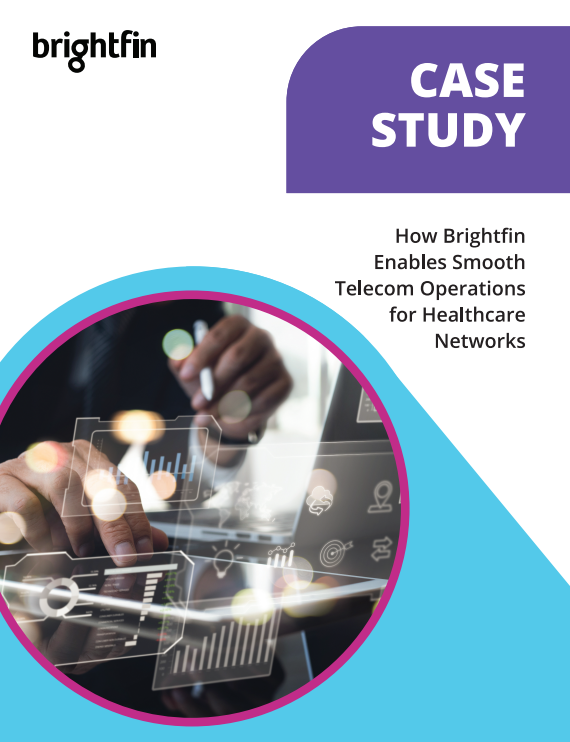Intro
in·er·tia—a tendency to do nothing or remain unchanged. When it comes to the universe, inertia is good. It’s the force that keeps matter in its current arrangement. In other words, it literally holds the universe together. But when it comes to companies—and even our own lives—inertia has a dark side. It keeps us mired in bad habits and causes us to resist changes that could help us progress.
Nowhere is this more true than in the realm of technology expense management. Switching to a digital world has increased our capabilities beyond what our grandparents could have even conceived of, but it has also introduced a lot of complexities that must now be managed in a different way.
Sure, we have our manual methods of tracking information—the same ones we’ve embraced for many years—and they seem comfortable, kind of like sitting in a wet diaper may seem comfortable for a toddler. But there’s a better way!
Legacy systems can be error-prone and time-consuming and fail to give you the big picture. So why doesn’t everyone switch over to the latest and greatest expense management system?
You guessed it, inertia. Leaving behind the familiar can be hard and a little bit scary. We may fear the initial expense, the learning curve, and the time required to switch over to a new system. To be fair, these are real hurdles, but they are temporary. And the payoff will far exceed the investment.
Here are just a few of the benefits that TEM services has to offer:
Saves Money with Centralized Purchasing
Perhaps you’ve just recruited a whole new team to augment your customer service division, and they all need devices. In the meantime, you have a number of different devices that have been in use for several years and need to be replaced. IT expense management can help you consolidate new purchases and replacements so that you can buy in bulk and get better deals.
Gives Cross-Departmental Views
The problem with manual workflows is that they are siloed. For example, Department A may be ordering services or software that they already have access to through Department B. Expense management software helps you monitor the whole picture, not just departmental views, so that you can eliminate waste and streamline processes company-wide.
Increases Accountability and Compliance
Sloppy processes give people the license to act, well, sloppily. For example, if the process of handing in expenses for reimbursement is a clumsy, multi-step process, people will be more likely to be late with their requests. In some cases, employees may not be as accurate in their reporting, knowing that oversight is low. Slick processes that eliminate middlemen (end users go straight to the source with a brief, digital transaction) encourage compliance, rapid returns, and full transparency.
Improves End-User Experience
Automated systems can help you see how quickly problems are being resolved, what the variety of complaints are centering around, etc. This data can help you eliminate bottlenecks and bolster manpower and service offerings to keep end-users happy.
Empowers Customers
Consider this clunky scenario: A customer needs help. They call your customer service staff, wait on hold for 10 minutes, and speak to a representative. The rep can’t solve their problem so they send a note to a manager—who is on vacation. The customer waits until they finally return, then a couple of days more until the manager can work through their mountain of piled-up emails. You can bank on an unhappy review from this frustrated customer, but what if you empowered them to solve their problems on contact? Good software can help customers resolve billing issues on their own, without having to wait for a chain of people to respond. They’ll feel better, and you’ll feel better knowing that this freed your staff up to work on other things.
Tracks Devices
The work-at-home movement can make for happy employees who get to manage their work hours and spend less time commuting. But there’s one employee who may not be happy—and that’s the one responsible for managing this proliferation of devices. Which ones need repair? Which ones need software updates? How do you ensure that these devices are reclaimed from exiting employees? How can you track stolen devices? The right software can help manage devices for you, simplifying what can be a Byzantine tangle of hardware-tracking headaches.
Manages Contracts
Contracts are another maddeningly complicated frontier. It’s easy to lose track of when they expire, whether the terms are right for your current needs, and if the price you negotiated is still fair. The right expense management software can perform regular contract-rate audits that assess contract terms, termination dates, and competing contracts, saving you massive headaches and a lot of money, too.
Helps You Negotiate
Better contract management leads to better negotiations when it comes time to renew your contracts. Expense management software can generate reports that help you get smart on what you need to stay competitive and profitable. The software does the heavy lifting so that you can approach the bargaining table armed with knowledge and confidence.
Manages Disputes
Whether you’re dealing with vendors or clients, dispute management can be a very messy, ongoing process. Rather than monopolizing your workforce in babysitting these disputes, expense management software can do the tracking for you, ensuring greater efficiency and accuracy. The switch to automated expense management solutions may hurt a bit at first, but when you consider how much more efficient and profitable this switch can make your organization—not to mention how it can improve your customer service—it’s a no-brainer. So overcome that inertia and revolutionize your company today.




